
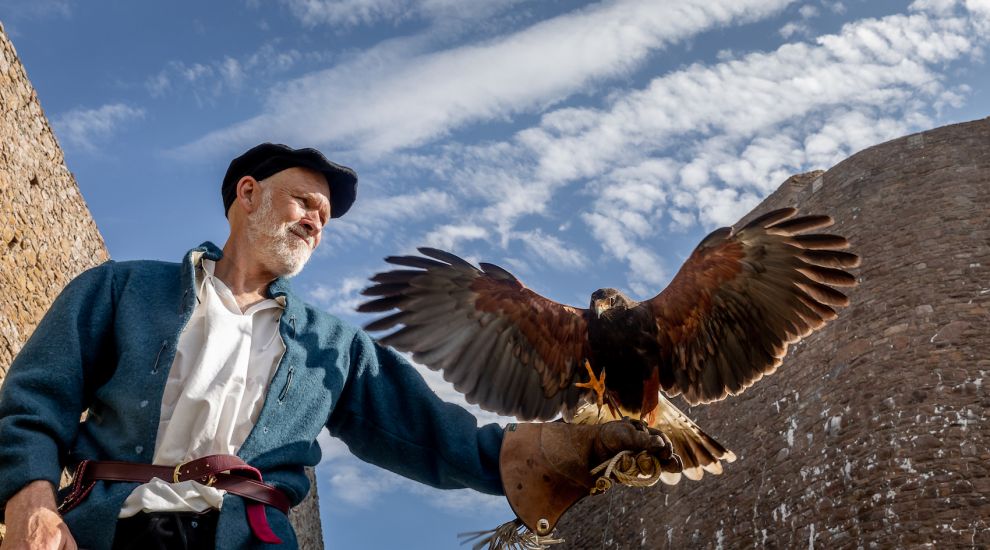

As a change of gear goes, moving from a 40-year career in finance to become a falconer giving public displays in a castle is pretty hard to beat.
That's exactly what Simon Dowling decided to do when he retired and wanted something to keep him occupied.
Just three months after being selected for the role, Simon is working with a bird of prey at Mont Orgueil Castle two days a week.
It’s a life our forebears would have been familiar with, developing language and terminology we use to this day, as Express found out...
It’s amazing just how many of the words and phrases we use every day come from falconry. We all feel ‘fed up’ from time to time, but did you know that it originates from when a bird of prey is too heavy to fly? Like prize fighters, they have an ideal weight and if they’ve had too much to eat, well, they get grumpy and don’t want to do what’s expected of them.
To ruffle one's feathers comes from falconry too. As I’m talking to Simon, a pair of seagulls begin swooping towards Sovereign, the nine-year old Harris Hawk he’ll be working with. She visibly ruffles her feathers, showing her discomfort at being targeted by the gulls.
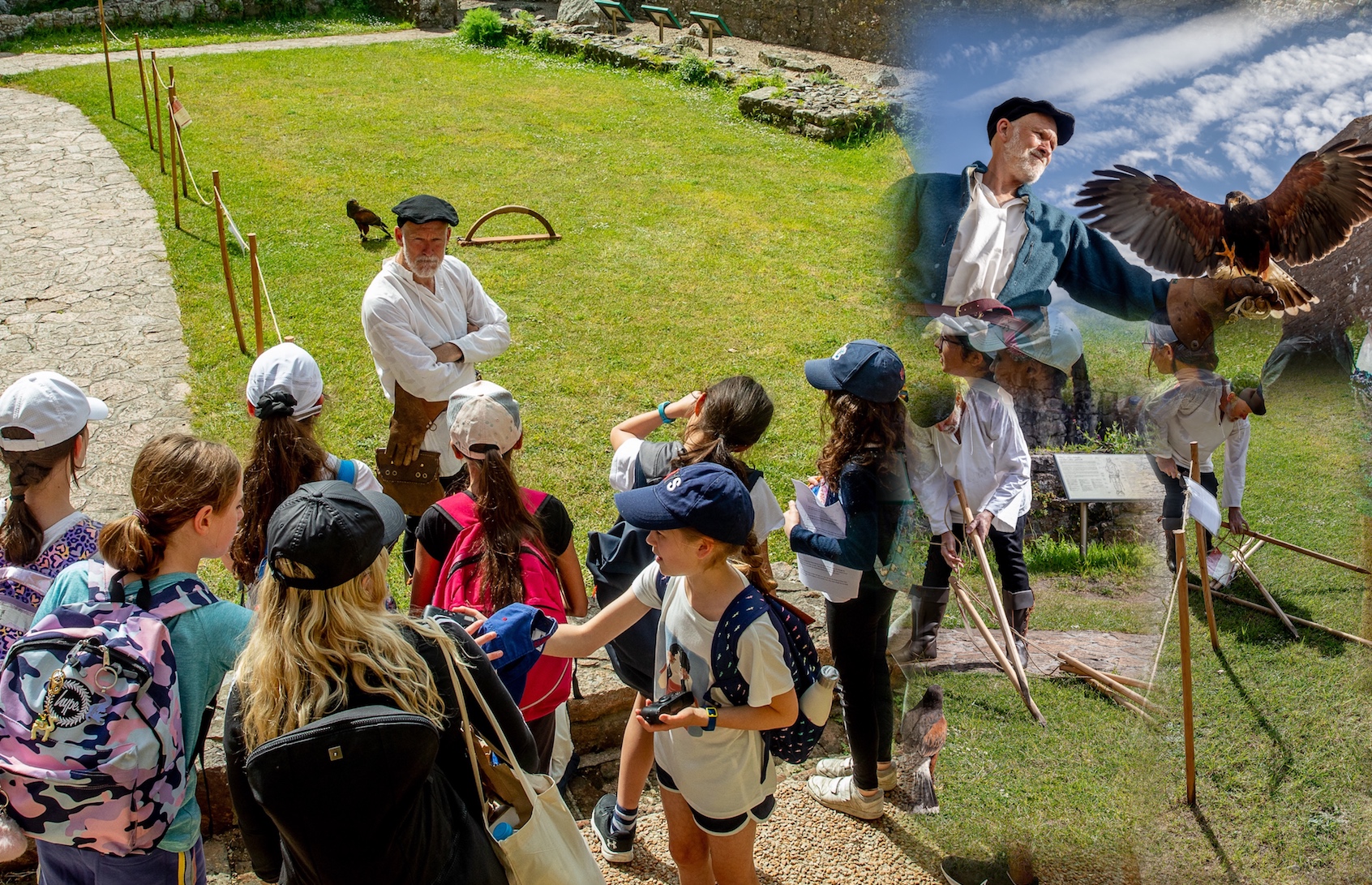
Pictured: Simon Dowling teaching children about 'Sovereign' and his job/bond with her.
There’s a lot to learn about falconry and up until three months ago, Simon knew very little about it. His interest had been sparked by something he saw on holiday.
“My background for 40 years was financial services. I retired in the autumn last year and the idea was to take some time off, recalibrate and find something that I might want to do, rather than something that would pay the rent and the mortgage.”
The family went to Madeira over Christmas and New Year and at breakfast at the hotel one morning, they noticed someone standing nearby with a bird of prey on his arm. He was there with his hawk to deter pigeons and seagulls from bothering the diners.
“I looked at it and thought it was beautiful but didn’t think anything further, other than it was an attractive bird that had a purpose in life that, probably, people knew very little about. We got back to Jersey and within two or three weeks there was the advert for a falconer. My wife said to me, ‘Have you seen this, Simon? It’s outside your comfort zone but you’re usually up for just about anything.’”
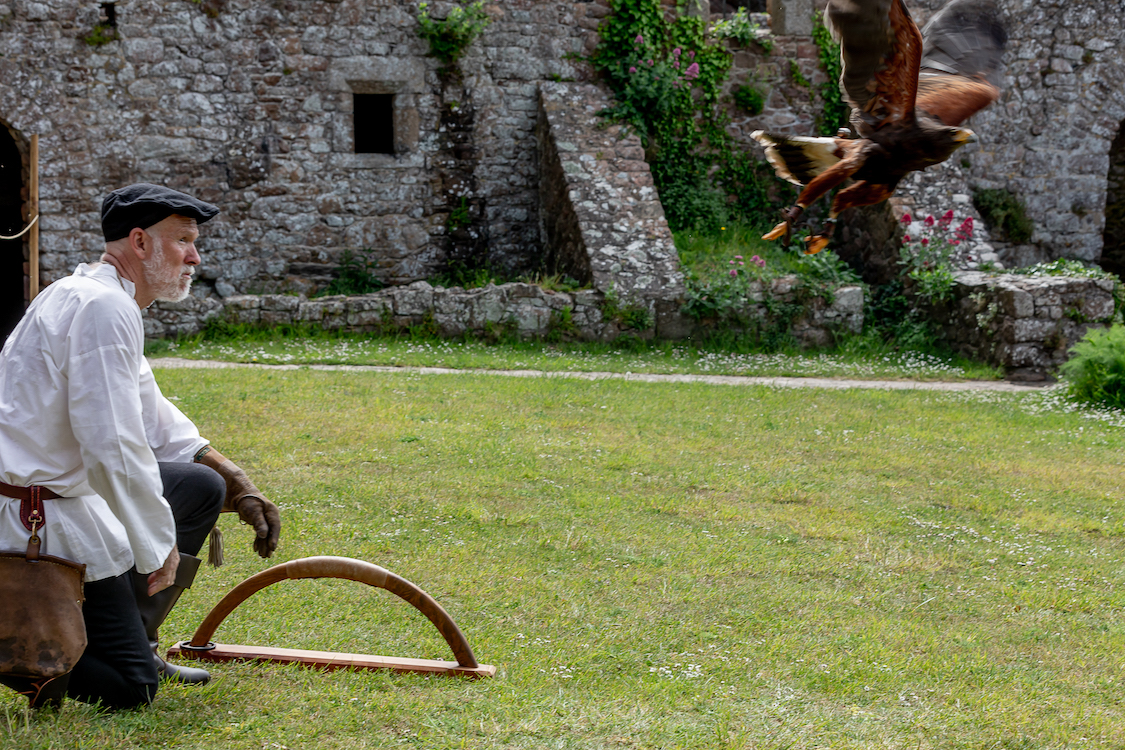
Pictured: “At first, I was told, she will stare at you because she doesn’t know whether you are a friend or whether she should be fearful of you."
The application process might have seemed straight forward but there were actually two interviews, a normal one and then one with the bird he was hoping to be working with. The most important thing was for Simon and Sovereign to bond.
“We got on sufficiently well to be sent back for further training and they sent me the contract of employment,” as Simon is telling me this, Sovereign is a few metres away, staring at me intently. It’s something they do when they are working out whether you are a friend or a foe. “When I saw the contract of employment it said: place of work – Mont Orgueil; job title: Castle Falconer. I realised I was in a unique position and that was the time I committed myself 120%.”
It’s been demanding work and there have been some interesting moments. Simon points out that he is working with a wild bird that’s trained, not tamed. If Sovereign doesn’t want to fly back, then she won’t. The process of building up that trust means spending hours walking with the bird on your arm, something Simon has had to do at St. John’s Manor, where the birds which are owned by Jersey Falconry are based.
“At first, I was told, she will stare at you because she doesn’t know whether you are a friend or whether she should be fearful of you. Slowly, over time, they told, me she will start looking around because she’ll be more relaxed, and you’ll be more relaxed as well. In the mornings, when we go into the aviary, I can sense whether she’ll be committed to jump up onto my arm. If she’s not, you have to leave her there and come back the next day.”
There are a lot of subtle clues as to whether it’ll be a day when Sovereign will be interested in doing the things her handlers would like her to do. Her weight is a critical factor: a half ounce too much and she won’t want to come out. Her ideal flying weight is 1 lb and 15 ounces. Coming back to where we began, if she is over that weight she will be ‘fed up’ and she won’t want to perform.
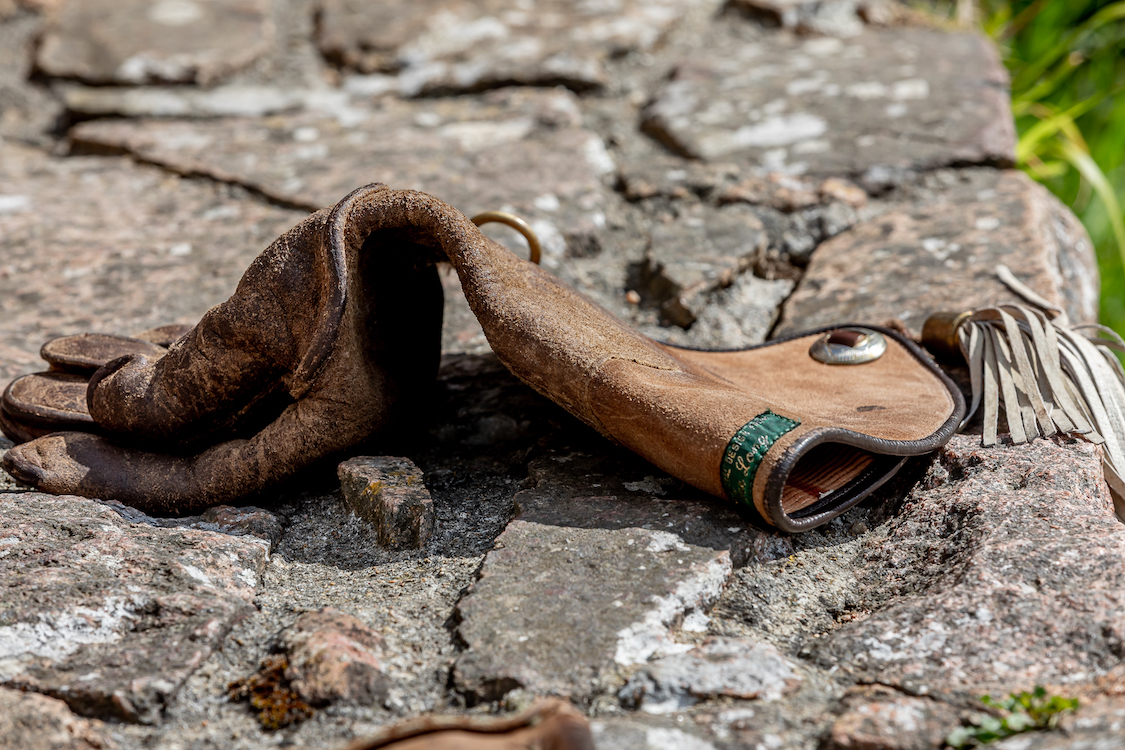
Pictured: "There is a lot to learn about falconry and up until three months ago, Simon knew very little about it."
It’s amazing how close we once were to birds of prey. Up to and including Tudor times, nearly everyone owned a bird of prey, which they would either use as a sign of status or to catch food, or both. Simon has had to learn about the centuries-old practices of falconry and how to interact with the bird he’ll be using. But he’s had some help and some very intensive training.
“Richard Hall from Jersey Falconry is a Master Falconer with 30 years of experience. You are absorbing that from him, and he’s given me a library of books to read. I’ve also been listening to Mike Entwistle, who has been the Castle Falconer for years. I read a book and Richard will ask whether I’ve finished a chapter and then ask me some questions to make sure I have.”
As if the role isn’t challenging enough, as part of Jersey Heritage’s living history programme, Simon will be in costume for the Tudor period, and will be able to talk about the castle while also bringing in the history of falconry into his demonstrations with Sovereign.
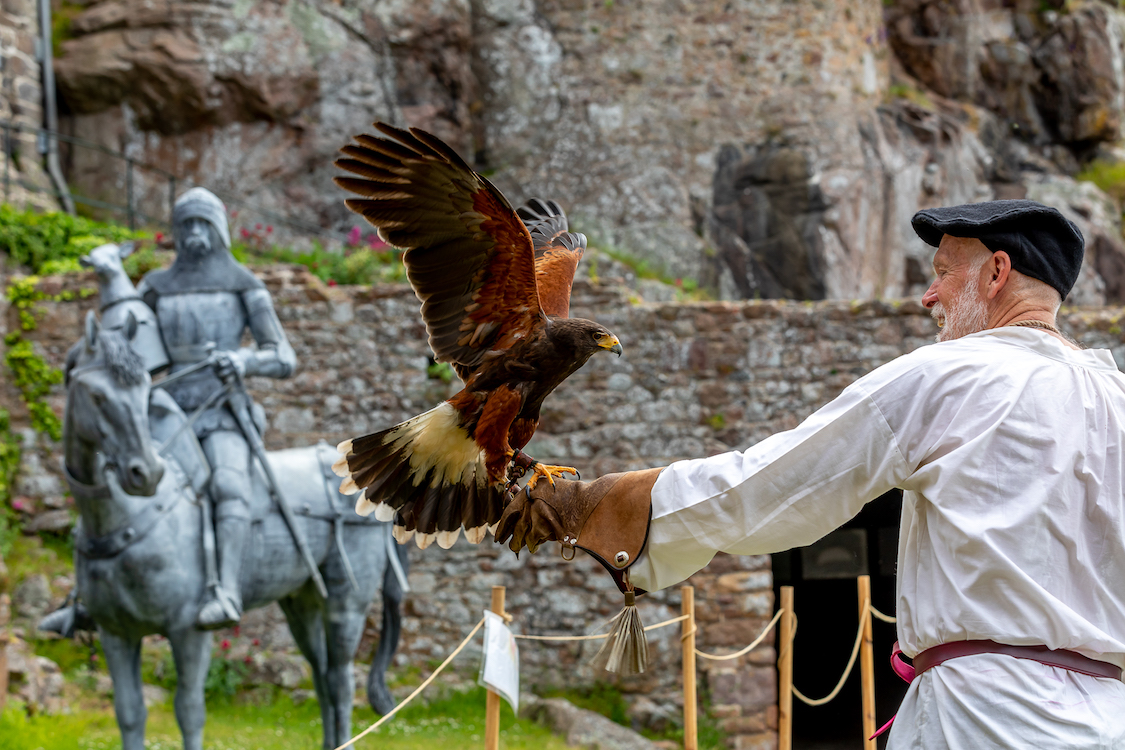
Pictured: Simon is working two days a week with a bird of prey at Jersey Heritage site Mont Orgueil Castle.
“Falconry from 500 AD to 1500 was the common activity of everyone. In the same way we have mobile phones now or cars, everyone had a falcon. Different strata of society were entitled to have a particular bird. It was a criminal offence to have one outside of your position in society. The expression is, ‘an eagle for an emperor and a kestrel for a knave.’ In the day it was a Tudor Tinder because it was an effective way of meeting the opposite sex as it was a good reason for people to come together.”
There are no shortcuts to taking on this role. For someone more used to working in financial services, this was akin to learning Japanese from scratch. The moment Simon, who’s known as Jean Simon when he’s in character, knew Sovereign had taken to him was when he could arrive at the aviary and simply look at her and know she was going to come to his glove or just stay with her back to him.
Not everything will go to plan. While we are talking, the previous Falconer, Mike Entwistle, is packing up after giving a demonstration to visitors. He tells me a story about how he once had to knock on the door of a nearby house and ask for his hawk back. She had been spooked during a demonstration and had flown across Castle Green. It’s a reminder about the trust that builds up between bird and falconer.
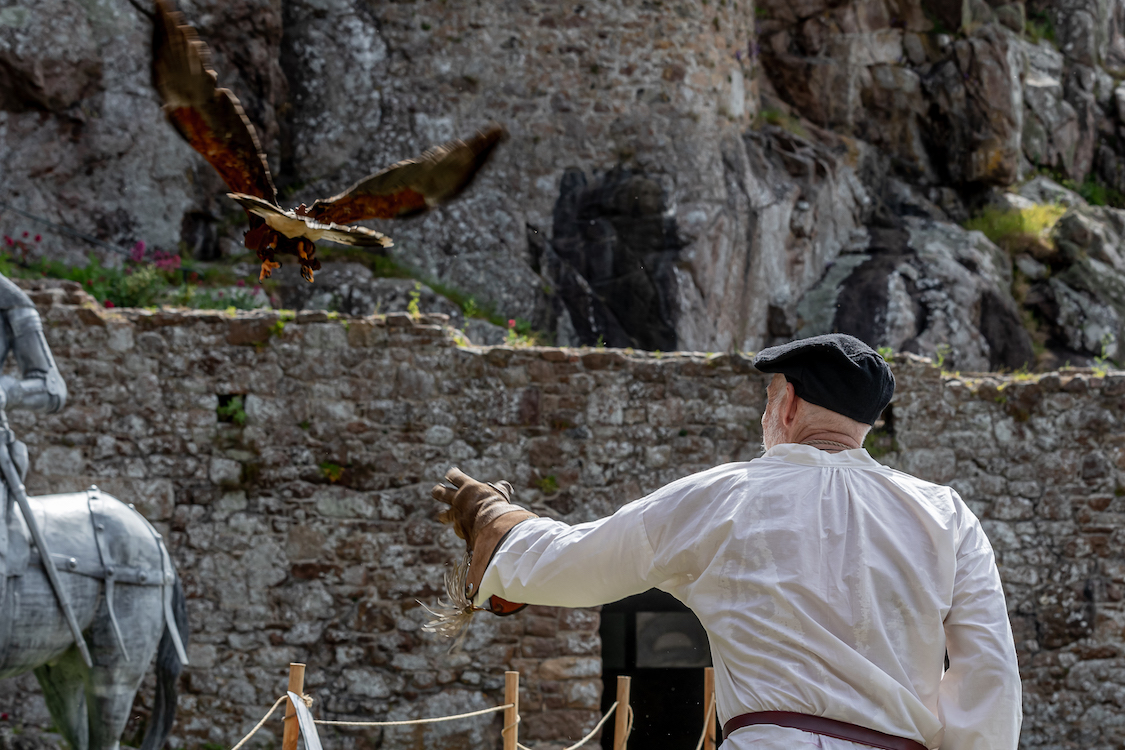
Pictured: Simon performing a training session with nine-year-old Harris Hawk Sovereign.
“It is a unique interaction,” says Simon. “A dog most of the time is on its lead and knows who its owner is but with these birds, she’s constantly looking around, and when she’s off the leash she’s got every ability to fly wherever she wants, and occasionally she will do.”
The leash is used to secure Sovereign to Simon’s gloved arm or to her perch. It’s a short length of thin rope and when she’s safely on his arm, the end of the leash is under his thumb and wrapped around his finger, another couple of phrases we owe to falconry. Oh, and there’s also ‘at the end of your tether’, but I must stop dropping these in.
The practices are now behind Simon and by the time this article is published, he will have completed his first few weeks and be fully assimilated into his role as Jean Simon, Castle Falconer and employee of Governor Sir Hugh Poulet in 1570. It is a huge change in lifestyle.
“It’s taking me back to nature,” Simon explained. “We live in Jersey, an island that is steeped in history, and here is an opportunity to get involved in a genuine part of the history of the island. We all live on our phones and computers but when you come up here, you actually learn about history. How it’s changed me is that I’ve got more time to devote to learning about the way the island was managed and run.”
This article was first published in Connect, and you can read the full story HERE.
Comments
Comments on this story express the views of the commentator only, not Bailiwick Publishing. We are unable to guarantee the accuracy of any of those comments.